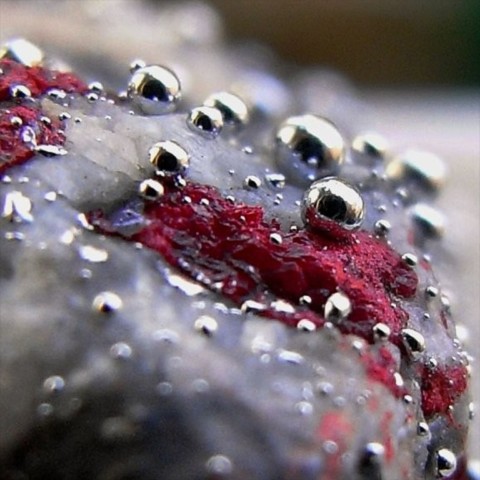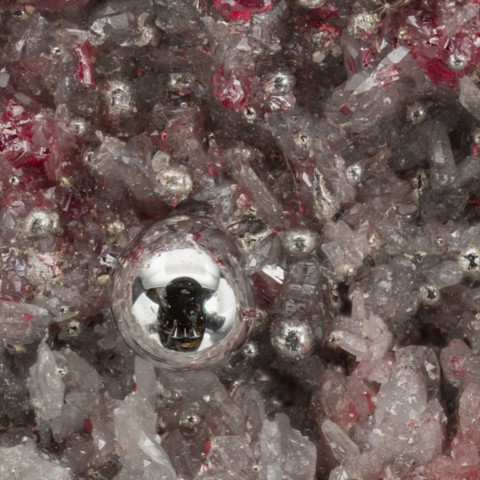MERCURY
Class : Elements
Subclass : Metals
Crystal system : Trigonal
Chemistry : Hg
Rarity : Rare
Although liquid down to -39°C, native mercury is considered a mineral. It thus deviates from the very definition of mineral which stipulates that all minerals must be solid at room temperature. By extending this exemption, water would be classified as a mineral because ice has all the properties of a mineral. Mercury is always slightly argentiferous, announcing moschellandsbergite and other amalgams. Mercury is an hydrothermal mineral of low temperature deposits, it is also present in hot spring deposits. It is a mineral known since Antiquity and mentioned by Theophrastus in 315 BC. The etymology of this name can relate to Mercury from Roman mythology, messenger and traveler, it would be an allusion to the liquid, therefore moving, character of the mineral. We can also link this term to the Latin mercurius used by alchemists to designate both the metal and the planet. It is also the chemical symbol for Latin hydrargyrium (Hg): liquid silver. At -39°C, mercury crystallizes into small rhombohedra. It has a strong metallic luster, is very shiny, and has a tin-white color, as well as a very high density, close to 14. Native mercury is an accessory ore of mercury, which accompanies cinnabar in small quantities, the essential ore of this metal.
Main photo : Mercury from Socrates Mine, California, USA © Eugene & Sharon Cisneros
Mercury in the World
Twinning
No twin known for this mineral species.
Fakes and treatments
No fakes recorded for this mineral species.
Hardness : -
Density : 13.59
Fracture : None
Streak : None
TP : Opaque
RI : -
Birefringence : -
Optical character : -
Pleochroism : None
Fluorescence : None
Solubility : Nitric acid
Magnetism : NoneRadioactivity : None





